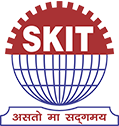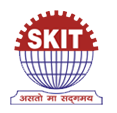Course Outcomes:
After completion of this course, students will be able to:
CO1: Explain the hardness of water, characteristics of municipal supply water and boiler troubles due to hard water and thereby apply various techniques of water softening for industrial and domestic use.
CO2: Describe the composition, characteristics and manufacturing methods of various types of solid, liquid and gaseous fuels and solve the numerical problems related to calorific value and combustion of fuels.
CO3: Explain the dry and wet corrosion mechanisms and their protection methods.
CO4: Describe the composition and manufacturing methods of engineering materials namely cement and glass and explain the properties and working mechanisms of different types of lubricants.
CO5: Describe the composition and manufacturing methods of engineering materials namely cement and glass and explain the properties and working mechanisms of different types of lubricants.
Mapping Matrix of CO's and PO's
|
COs |
PO1 |
PO2 |
PO3 |
PO4 |
PO5 |
PO6 |
PO7 |
PO8 |
PO9 |
PO10 |
PO11 |
PO12 |
|
CO1 |
3 |
2 |
- |
- |
- |
2 |
1 |
- |
- |
- |
- |
- |
|
CO2 |
3 |
2 |
- |
- |
- |
2 |
1 |
- |
- |
- |
- |
- |
|
CO3 |
2 |
- |
- |
- |
- |
2 |
- |
- |
- |
- |
- |
- |
|
CO4 |
1 |
1 |
- |
- |
- |
2 |
- |
- |
- |
- |
- |
- |
|
CO5 |
1 |
- |
- |
- |
- |
2 |
1 |
- |
- |
- |
- |
- |





